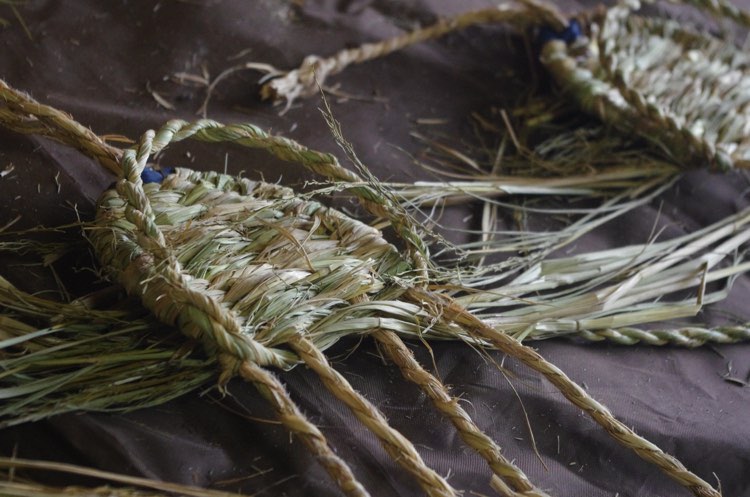
Satoyama Experience
・・・Satoyama Experience・・・
In this hands-on experience, participants can make traditional shoes or decorations using rice straw sourced locally in Fujino’s satoyama. Satoyama describes the traditional rural landscape made up of farmland, irrigation ponds, secondary forest, plantation forest, and grassland, in which people live sustainably with the natural environment. Rice straw is a byproduct of rice production, making it a plentiful and easily accessible material in many parts of rural Japan. After the rice is cut and the grain removed at harvest time, the straw is left to dry in the fields; it can be stored and used as required. Centuries ago, rice straw was a valuable resource used to make a variety of products including footwear such as waraji (a light, tie-on sandal), ashinaka (a half-soled straw sandal), and zori sandals.
Waraji were the simplest form of outdoor footwear worn by common people from the Heian period (794–1185) until the end of the Edo period (1603–1867) consisting of a rice-straw sole tied on with rice-straw rope. Ashinaka are “half-soled sandals” worn on the front part of the foot making them easy to slip on and off. Straw ashinaka were commonly used in farming and fishing villages by laborers in the Edo period. Today, they are still used by fishermen who practice the ancient art of ukai (cormorant fishing), which is conducted in only 13 places across the country. Cormorant fishing involves catching ayu (sweetfish) using trained cormorants with a loose snare tied at the base of their throats so that the fishermen can retrieve the fish before the birds swallow them. Zori are slip-on sandals made from rice straw, cloth, lacquered wood, or leather. They originated as a form of waraji to be worn with more formal clothing such as kimono.
Rice straw has also long been used to make traditional New Year decorations. These are put up in the entranceway of houses at the end of the year to welcome the deities of good fortune and ward off evil.

The workshop takes place in an old Japanese house located high on a hill overlooking the fields and valley below. The instructor explains how to work with the rice straw step by step. First, the harvested stalks are sprayed with water to make them more pliable. They are then beaten with a wooden mallet to remove any loose pieces. The straw is then twisted into rope using various techniques depending on the rope’s intended purpose. Once the rope is complete, participants can choose to make either one kind of traditional footwear or a traditional New Year decoration.
The ashinaka-making workshop is followed by a walk in the mountains surrounding the house so participants can try out their new footwear. This type of sandal is ideal for hiking as its texture offers excellent grip and it fits closely to the soles of the feet, protecting against stones and mud.
